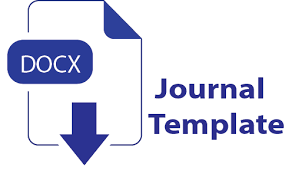An error analysis of using simple past tense on student's writing recount text
DOI:
https://doi.org/10.53873/culture.v12i1.625Keywords:
Error, Recount, Simple Past Tense, WritingAbstract
Doing error analysis can be one of the best ways to determine and to provide information of student needs in learning process. This research aimed to identify and to describe the causes of error in using simple past tense found in student’s recount text production. In this research, the researcher used descriptive and qualitative research. For collecting data, the writer used students’ writing recount text test of tenth grade students of SMA N 1 Mranggen. From the analysis, it was found that students did all types of error. the total of students’ error were 167-word errors from 34 texts. It was classified into four types of error. Those were omission with 87 errors (52,09%), misformation with 67 errors (40,11%), addition with 67 errors (4,2%), and misordering with 5 errors (3,6%). The researcher also found that the most common and the most dominant types of error in using simple past tense is omission type with 87 errors (52,09%) of total errors under the categorization of irregular past. In this case the researcher found as many as 21 errors or 10, 16% in omission of irregular past based on caused of error namely Interlingual and Intralingual cause of error.References
Andansari, I., Sari, O. W., Murwantono, D., Ahmad, U., & Yogyakarta, D. (2019). The students’ error analysis of writing in recount text for the milineal students. Proceeding of the 1st STEEEM, 1, 132-138.
Arifin, M. N., Heriyanto, E., Kurniadi, D., & Arvianti, I. (2024). Analyzing grammar errors among Hellotalk users and proposing effective correction strategies. English Learning Innovation (englie), 5(1), 26–37. https://doi.org/10.22219/englie.v5i1.31569
Astrid, A., Illa, D. M., & Husnaini, H. (2023). Difficulties in writing of the second-grade students at Junior High Schools in Palembang. Wiralodra English Journal (WEJ), 7(2), 65-77. DOI: https://doi.org/10.31943/wej.v7i2.236
Atmowardoyo, H., Weda, S., & Sakkir, G. (2021). Learning strategies in English writing used by good language learners in millennial era: a positive case study in universitas negeri Makassar. In Proceeding Book the Language Teacher Training And Education International Conference (Vol. 1, No. 1, pp. 187-196). Program Magister Pendidikan Bahasa Inggris Fakultas Keguruan Dan Ilmu Universitas Sebelas Maret.
Fatsah, H., Ashrafiany, N. A., & Basalama, N. (2020). The students' writing difficulties in writing an essay based on cognitive process. Lingua, 16(1), 61-69. DOI: https://doi.org/10.34005/lingua.v16i1.560
Ilyosovna, N. A. (2020). The importance of English language. International Journal on Orange Technologies, 2(1), 22-24.
Gulö, I., & Rahmawelly, T. V. (2019). An analysis of omission in students’ English writings. Teknosastik, 16(2), 55-59. DOI: https://doi.org/10.33365/ts.v16i2.141
Husna, A., & Multazim, A. (2019). Students’ difficulties in writing recount text at inclusion classes. LET: Linguistics, Literature and English Teaching Journal, 9(1), 52-76. DOI: https://doi.org/10.18592/let.v9i1.3077
Harmer, Jeremy. (2004). How to teach writing. Harlow: Longman.
Hifni, H., & Fahriany, F. (2022). The influence of studying abroad on word-production acquisition and intercultural growth of Indonesian EFL learner. Leksika: Jurnal Bahasa, Sastra dan Pengajarannya, 16(1), 1-10. DOI: 10.30595/lks.v16i1.10667
Kusumawardhani, P. (2017). The analysis of errors of omission in english narrative composition made by EFL students. JELE (Journal of English Language and Education), 3(2), 84-96. DOI: https://doi.org/10.26486/jele.v3i2.257
Limengka, P. E., & Kuntjara, E. (2013). Types of grammatical errors in the essays written by fourth-semester students of English department, Petra Christian University. Kata Kita: Journal of Language, Literature, and Teaching, 1(1), 230-238. DOI: https://doi.org/10.9744/katakita.1.1.230-238
MacDonald, M. C. (2013). How language production shapes language form and comprehension. Frontiers in Psychology, 4, 40296. DOI: https://doi.org/10.3389/fpsyg.2013.00226
Mediska, G., Adnan, A. (2019). Improving student's speaking by using cocktail party technique in teaching recount text for Senior High School students. Journal of English Language Teaching, 8(2), 295-304. DOI: https://doi.org/10.24036/jelt.v8i2.104272
Maynard, D. W., & Turowetz, J. (2013). Language use and social interaction. Dordrecht: Springer Netherlands, 251-279. DOI: https://doi.org/10.1007/978-94-010-1876-0_18
Mufidah, P. N., & Islam, S. (2022). An analysis of grammatical error on student's writing. IJOEELL: International Journal of English Education and Linguistics, 4(1), 1-13. DOI:10.33650/ijoeel.v4i1.3826
Nunan, D. (2003). Practical English language teaching (1st edition). New York: McGraw Hill.
Nurgiyantoro. (2008). Belajar dan pembelajaran. Jakarta: Rineka Cipta.
Permatasari, A. D., Wijayatiningsih, T. D., & Mulyadi, D. (2018). Error analysis on EFL learners’ analytical exposition writing. Surakarta English and Literature Journal, 1(1), 22-30. DOI:10.52429/selju.v1i1.204
Rahmadhani, A. P., Afriyanti, R., & Riza, A. (2022). The implementation of teaching writing through a genre-based approach. TELL-US Journal, 8(2), 1-12. DOI:10.22202/tus.2022.v8i2.5843
Sa’adah, A. R. (2020). Writing skill in teaching English: an overview. EDUCASIA: Jurnal Pendidikan, Pengajaran, dan Pembelajaran, 5(1), 21-35. DOI: https://doi.org/10.21462/educasia.v5i1.41
Sianturi, D. S., Situmorang, S. A., Gulo, P., & Saragih, E. (2020). An analysis of recount text in English textbooks used by tenth grade students. Journal of Languages and Language Teaching, 8(2), 120-127. DOI: https://doi.org/10.33394/jollt.v8i2.2280
Sitorus, G., & Sipayung, K. (2018). An error analysis of using phrases in writing recount text at tenth grade in SMA Parulian 2 Medan. Celt: A Journal of Culture, English Language Teaching & Literature. 18 (1), 79-88. DOI: https://doi.org/10.24167/celt.v18i1.562
Shinta, Q., Ellyawati, H. C., & Tatas, H. L. (2023). An error analysis of students’ cover letter writing assignments. ETERNAL (English Teaching Journal), 14(1), 82-94.
DOI: https://doi.org/10.26877/eternal.v14i1.14445
Tarigan. Henry Guntur. (2008). Writing as a language skill. Bandung: Space publisher.
Yuliawati, L., & Andayani, E. S. (2020). Type of error on articles in students’ writing. Visi Sosial Humaniora, 1(2), 199-208. DOI: https://doi.org/10.51622/vsh.v1i2.175
Zuraini, Z., Misnawati, M., Lisa, A., & Nofriati, E. (2021). Boosting the students in mastering writing skill through the implementation of PPIE (Point, Presentation, Illustration, Explanation) technique. Jurnal Culture (Culture, Language, and Literature Review), 8(1), 100-111. DOI: https://doi.org/10.53873/culture.v8i1.230
Downloads
Additional Files
Published
Issue
Section
License
Copyright (c) 2025 Iis Faizah, Muhammad Wahyu Widianto, Maria Yosephin Widiarti Lestari

This work is licensed under a Creative Commons Attribution 4.0 International License.













